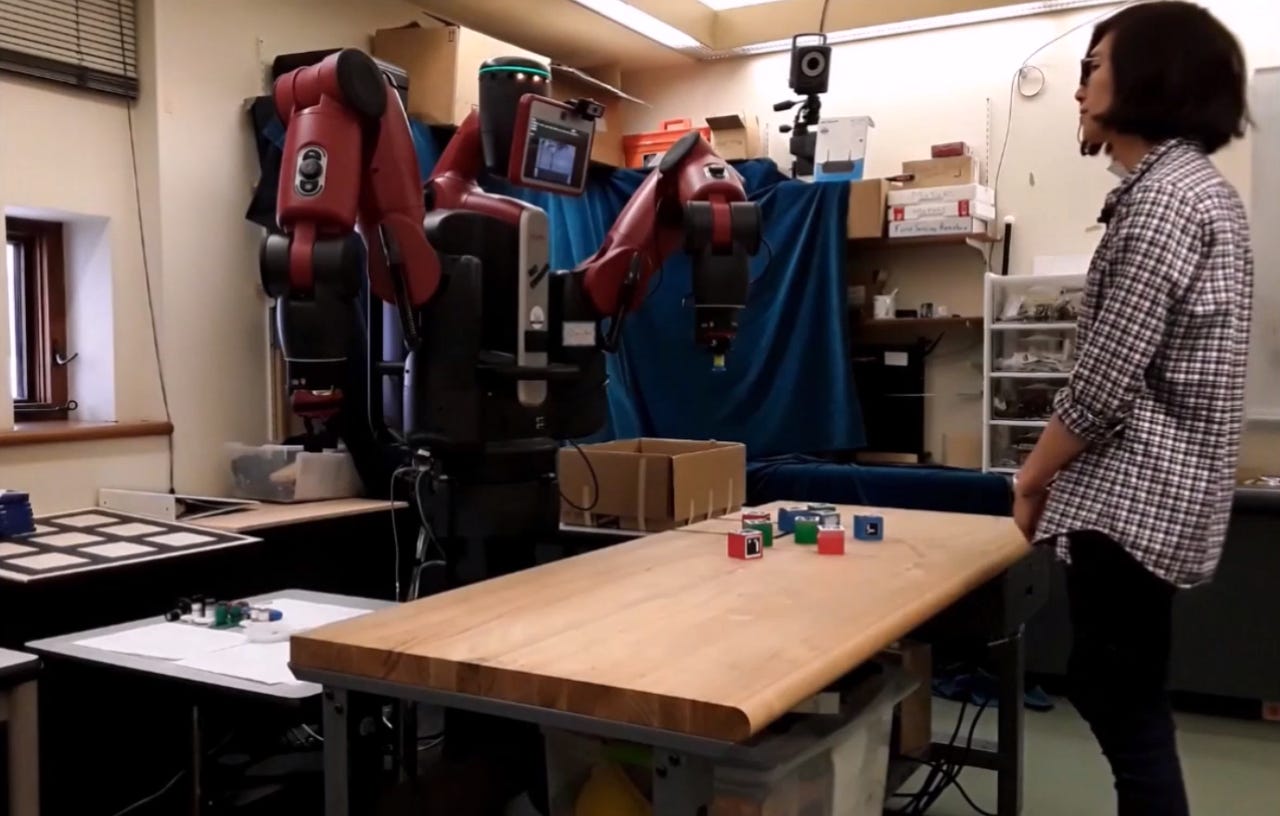Software teaches robots to respect ownership


Yale researchers developed software to teach robots about ownership. (Image: screen shot via Yale.)
The rise of collaborative robots (cobots) is bringing robots and humans closer together than ever before, but robots still lack some important social graces. Researchers at Yale University have developed a robotic system that helps robots be more polite (and more importantly, more useful). They are teaching robots to respect ownership of objects.
"As robots begin to be used in our homes, schools, and workplaces, it is important that they be able to understand the social conventions that we use every day," researcher Brian Scassellati explains.
CES 2023
Scassellati, along with Xuan Tan and Jake Brawer, developed a system to help robots distinguish between tools that they own and tools that other people or robots own (or are temporarily using).
Scassellati says, "I want my robot at home to understand that it is allowed to clear the dishes from the table when we have finished eating, but not before. I want my robot at work to know that it can borrow the screwdriver that I'm not using, but that it cannot borrow my coffee cup. Knowing how to work side-by-side with people is a skill that many robots will need."
To accomplish this, the researchers combined two different kinds of machine learning representation: one that uses explicit rules, and another that uses experiences to predict an object's likely owner.
They used a technique called Bayesian inference, which Scassellati explains is a statistical technique that the robot uses to keep track of how certain it is about a particular fact or idea in such a way that it can update that certainty as more information becomes available.
The research is pre-published on arXiv. According to the paper, "Ownership is represented as a graph of probabilistic relations between objects and their owners, along with a database of predicate-based norms that constrain the actions permissible on owned objects."
The researchers used Baxter robot (from now defunct Rethink Robotics) to demonstrate how their software system works, but the system itself could be used on other robots. Through both simulated and real-world experiments, they demonstrated that robots could use their system to complete tasks while respecting ownership rules.